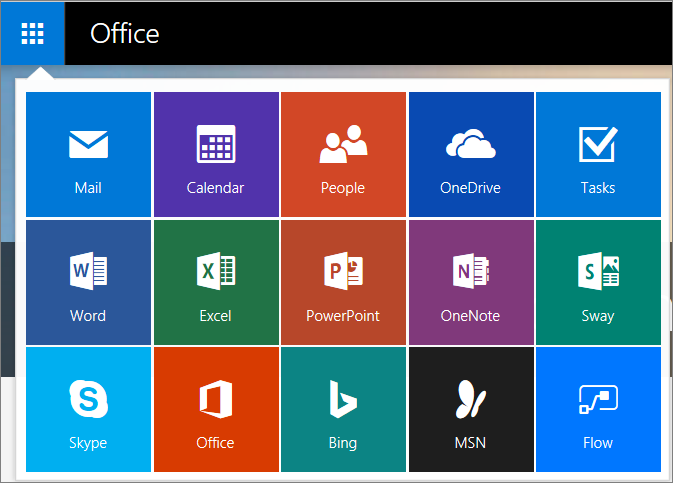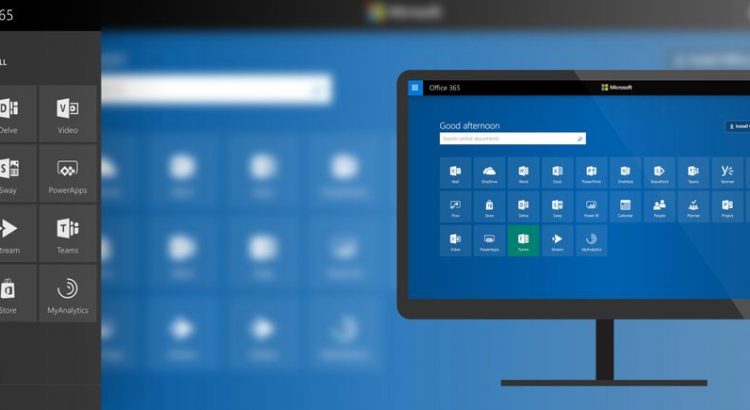365 App Launcher
While some business applications are quickly moved to the cloud, others remain on-premises for the time being. To support user adoption, some items from the new world should be introduced to the old world. In this specific case, the term new world refers to Office 365, while the old world could be any other internal system not yet ready to move to the cloud.

Jul 12, 2021 In Microsoft 365, you can quickly and easily get to your email, calendars, documents, and apps using the App launcher. These are apps you get with Microsoft 365 as well as custom apps that you add from the SharePoint Store or Azure AD. You can add your own custom tiles to the app launcher that point to SharePoint sites, external sites, legacy. Of course the App Launcher, your quick-start to all Office 365 applications: The Office 365 App Launcher is available across all Office 365 services, like SharePoint, OneDrive, Word, Excel, Planner, Power BI. Office365 App Launcher icons Is there a download location for Office365 tile app laucnher icons which are scalable? We have an event where we would like to print a poster of the app launcher. Jun 19, 2020 Remove Project from the Office 365 App Launcher. 6/19/2020; 3 minutes to read; s; v; e; In this article. If you have users with one of the Office 365 User view access to Project and Roadmap, a Project tile will display in the Office 365 App Launcher. An admin may want to keep the Project tile from displaying for the user in some situations. I can't find my Office 365 launcher in my start menu but I do have the EXCEL, WORDS and other apps after I reinstalled. This thread is locked. You can follow the question or vote as helpful, but you cannot reply to this thread.
So what is one of the most recognizible parts of Office 365? Of course the App Launcher, your quick-start to all Office 365 applications:
Wouldn't it be nice if the legacy applications would have the same app launcher integrated into their UI? Of course it would be! But nice doesn't mean it's easy to do.
By trying to reverse engineer the Office 365 pages, there are some APIs used to gather the related information for the apps displayed in the app launcher. The most obvious request calls the following endpoint: https://portal.office.com/api/myapps/GetAllApps
As seen in the above image, all relevant app information is returned from this API. Great, so why not directly use this API in your old world on-premises application? Unfortunately it's not that easy, at least. Trying to make the call client-side in the browser reveals the first major problem: Cross-Origin Resource Sharing (CORS) restrictions. Of course Microsoft won't allow any foreign domain to directly consume their resources, security comes first in the cloud. But there seems also to be no way to add an allowed origin for cross-domain requests for these types of API. Beside of this, the user must already be logged in to make a direct call to this API, which is not guaranteed if the user only logged in to his old corporate web site.
So why not trying to authenticate the user against Azure AD, getting his token and making a server-side request against this API with some Authorization headers? Sounds nice, too. But unfortunately, I wasn't able to succeed this way. This API obviously isn't meant to be consumed by other applications.
If we can't make it easy, let's make it the creative way!
By further investigating the App Launcher on Office 365, one will stumble upon the browser's local storage for the SharePoint domain (e.g. https://<tenant>.sharepoint.com/). In there, there is a key called SPSuiteLinksJson, and its value looks highly promising! It actually holds a large JSON string with user specific information. Two properties of the JSON object are exactly what we are looking for: NavBarData.WorkloadLinks and NavBarData.AppLinks. While the first holds all app information from the Apps overview of the app launcher, the second stores the additional apps visible in the App Launcher by clicking on the All Apps link. Bingo!
With that in mind, we can over-think the approach from calling an API and try to overcome authorization and CORS issues in another way.
The verified approach
Combining some good old techniques used in SharePoint years ago with some more fancy scripting styles, this leads to the following verified process: Include a SharePoint Online page, which has access to the local storage for its domain, inside the on-premises web page, and push the value from the SharePoint Online local storage to the parent frame!
Microsoft 365 App Launcher
Creating a proxy page in SharePoint Online
As always when it comes to SharePoint, there are some tricky steps to do to successfully make it working. By default, every SharePoint page includes an HTTP-Header x-frame-options: SAMEORIGIN in its response. This header ensures that a SharePoint page can only be i-framed in its own domain. Luckily, SharePoint offers a server-tag to avoid this response header:
By adding this tag to a page (by editing its source-file, e.g. by editing the .aspx-page via explorer or SharePoint designer), it then can be i-framed from anywhere in the web.
Now that the page is allowed to be included inside another domain, let it push the required values from local storage to it's parent frame. Once the page is loaded, the parent frame is informed via postMessage (JavaScript) about the values from the SharePoint Online domain's local storage:
Including the app data from SharePoint Online on the on-premises application
Now it is possible to embed the SharePoint Online proxy page in an (hidden) iFrame in the on-premises application. The only thing left to do for the on-premises page is to listen for the message event (JavaScript) to use the information from the SharePoint Online local storage:



The above variable suiteLinksStore now holds the local storage object from SharePoint Online. It can now be used to iterate over the WorkloadLinks and AppsLinks objects from the NavBarData object to get all the apps for the current signed in user with all required information like app title, URL, color and font-icon-class. With little effort, a replicated App Launcher in an on-premises environment can look like this:

Microsoft Office 365 App Launcher
Additional hints and considerations
- Ensure that the proxy page in SharePoint Online is shared with everyone in your organisation
- When adding the iFrame URL in your on-premises application to your proxy page, ensure to use (if possible) a Smart Link - something like https://login.microsoftonline.com/login.srf?wa=wsignin1.0&whr=<your adfs server>&wreply=https://<your tenant name>.sharepoint.com/pages/your-apps-proxy-page.aspx instead of the direct link to your proxy page. This ensures the user is logged in via single sign on to the SHarePoint Online platform and the page can push the local storage to your application. Find more information about Smart Links here.
- In your proxy page, ensure to check if the required key is already added to the local storage before pushing anything to the parent frame.
- To not always load the iFrame with the SharePoint Online proxy page, consider adding the data consumed by your event listener to the on-premises domains local storage. Only include include the iFrame (call to SharePoint Online) if you don't have the corresponding information in your domains local storage or if the information is outdated.
365 App Launcher
Did you like my first blog post? Or need any further information about my approach of integrating the Office 365 App Launcher on-premises? Feel free to leave me a comment below.